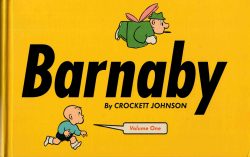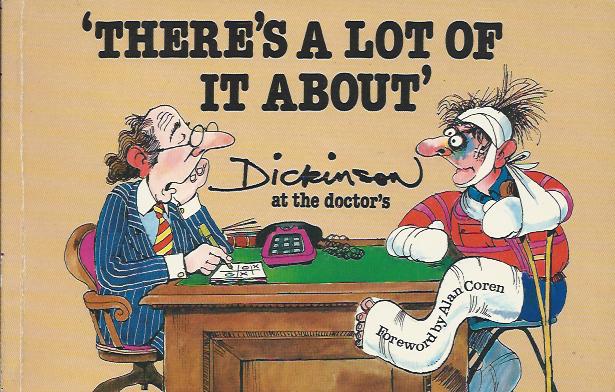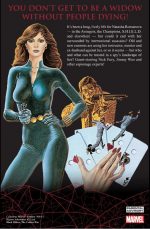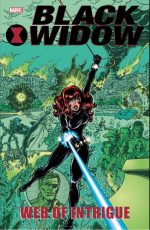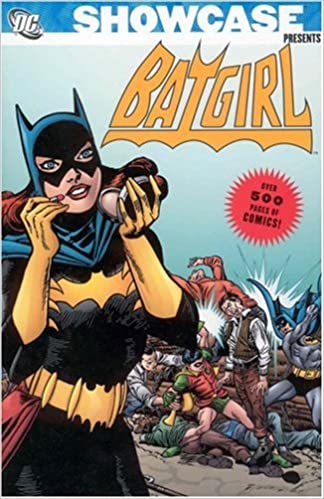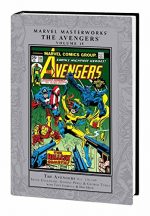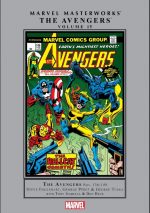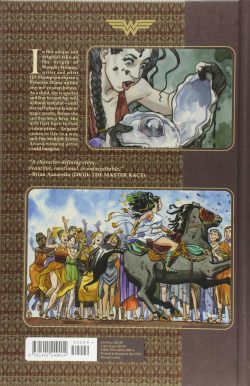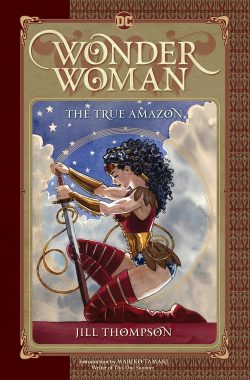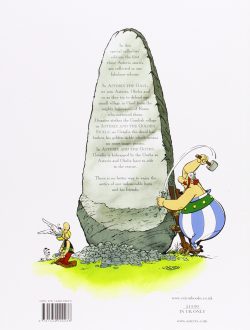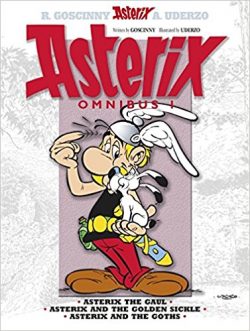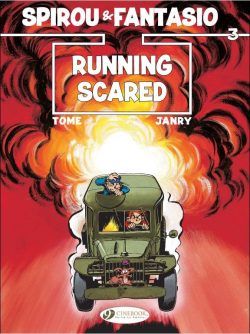
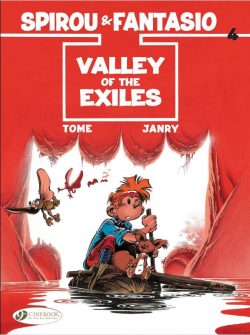
By Tome & Janry, colored by Stephane de Becker & translated by Jerome Saincantin (Cinebook)
ISBN: 978-1-84918-116-7 (Running Album PB), 978-1-84918-157-0 (Exiles Album PB)
For most English-speaking comic fans and collectors, Spirou is probably Europe’s biggest secret. The character is a rough contemporary – and calculated commercial response – to Hergé’s iconic Tintin, whilst the comic he has headlined for decades is only beaten in sheer longevity and manic creativity by our own Beano and America’s Detective Comics.
Conceived at Belgian Printing House by Jean Dupuis in 1936, this anthological magazine targeting a juvenile audience debuted on April 21st 1938; neatly bracketed by DC Thomson’s The Dandy which launched on 4th December 1937 and The Beano on July 30th 1938. It was edited by Charles Dupuis (a mere tadpole, only 19 years old, himself) and took its name from the lead feature, which recounted improbable adventures of a plucky Bellboy/lift operator employed by the Moustique Hotel (a sly reference to the publisher’s premier periodical Le Moustique).
Joined on June 8th 1939 by pet squirrel, Spip (the longest running character in the strip after Spirou himself), the series was visually realised by French artist Robert Velter (who signed himself Rob-Vel). A Dutch language edition – Robbedoes– debuted a few weeks later, running more-or-less in tandem with the French parent comic until cancellation in 2005.
The bulk of the periodical was taken up with cheap American imports – such as Fred Harman’s Red Ryder, William Ritt & Clarence Gray’s Brick Bradford and Siegel & Shuster’s landmark Superman – although home-grown product crept in too. Most prominent were Tif et Tondu by Fernand Dineur (which ran until the1990s) and L’Epervier Blue by Sirius (Max Mayeu), latterly accompanied by work from comic-strip wunderkind Joseph Gillain – “Jijéâ€.
Legendarily, during World War II Jijé drew the entire comic by himself, including home grown versions of banned US imports, simultaneously assuming production of the Spirou strip where he created current co-star and partner Fantasio).
Except for a brief period when the Nazis closed the comic down (September 1943 to October 1944) Le Journal de Spirouand its boyish star – now a globe-trotting journalist – have continued their weekly exploits in unbroken four-colour glory. Among other myriad major features that began within those hallowed pages are Jean Valhardi (by Jean Doisy & Jije), Blondin et Cirage (Victor Hubinon), Buck Danny, ‘Jerry Spring, Les Schtroumpfs (The Smurfs to you and me), Gaston Lagaffe/Gomer Goof and a certain laconic cowboy named Lucky Luke.
Spirou the character (whose name translates as both “squirrel†and “mischievousâ€) has starred in the magazine for most of its life, evolving under a series of creators into an urbane yet raucous fantasy/adventure hero with the accent heavily on light humour. With comrade and rival Fantasio and crackpot inventor the Count of Champignac, Spirou voyages to exotic locales, uncovering crimes, revealing the fantastic and garnering a coterie of exotic arch-enemies.
During WWII when Velter went off to fight, his wife Blanche Dumoulin took over the strip using the name Davine, assisted by Luc Lafnet. Publisher Dupuis assumed control of and rights to the strip in 1943, assigning it to Jijé who then handed it to his assistant André Franquin in 1946. It was the start of a golden age.
Among Franquin’s innovations were the villains Zorglub and Zantafio, Champignac and one of the first strong female characters in European comics, rival journalist Seccotine (renamed Cellophine for Cinebook’s English translations), but his greatest creation – one he retained on his own departure in 1969 – was incredible magic animal Marsupilami. The miracle beast was first seen in Spirou et les héritiers (1952), and is now a star of screen, plush toy store, console… and albums too.
From 1959, writer Greg and background artist Jidéhem assisted Franquin, but by 1969 the artist had reached his Spiroulimit and resigned, taking his mystic yellow monkey with him. He was succeeded by Jean-Claude Fournier who updated the feature over the course of 9 rousing yarns tapping into the rebellious, relevant zeitgeist of the times, telling tales of environmental concern, nuclear energy, drug cartels and repressive regimes.
By the 1980s, the series seemed to stall: three different creative teams alternated on the serial: Raoul Cauvin & Nic Broca, Yves Chaland and the author of the adventure under review here: Philippe Vandevelde writing as Tome and artist Jean-Richard Geurts AKA Janry. These last adapted and referenced the still-beloved Franquin era and revived the feature’s fortunes, producing 14 wonderful albums between 1984-1998. Since their departure, Lewis Trondheim and the teams of Jean-Davide Morvan & Jose-Luis Munuera and Fabien Vehlmann & Yoann have brought the official album count to 55 (there also dozens of specials, spin-offs series and one-shots, official and otherwise)…
Running Scared is from 1988: originally entitled La frousse aux trousses or ‘Fear on the Trail’. It was their eighth and the 40th collection of the evergreen adventurers. Harking back to the Fournier years, it comprises the first of an excellent extended 2-part thriller which concluded in Valley of the Exiles (originally released as La vallée des bannis AKA ‘Valley of the Banished’ in 1989).
Running Scared opens with a frantic and mesmeric chase scene as our eponymous young star races across the city in splendid breakneck tribute to the silent movie chases of Harold Lloyd and Buster Keaton. He’s late for a conference where he will recount his many harrowing, career-related escapes and show films of his numerous close shaves…
Barely making it, Spirou is disappointed by the reaction of the audience: those that don’t faint dead away from fear, flee the theatre in horror…
It’s a huge disappointment: the daring reporter was hoping to use the profits from the lecture tour to fund an upcoming expedition to discover the fate of two explorers who vanished in 1938. They were attempting to climb a mountain and discover the legendary “Valley of Exiles†in the mysterious Himalayan nation of Yurmaheesun-shan…
Since 1950, the tiny country has been subject to numerous invasions by rival super-powers and is a hotbed of rebellion, insurgency and civil war. Nevertheless, ever-undaunted Spirou and Fantasio are utterly determined to solve the ancient mystery.
Happily, their plans are only temporarily derailed. One of the fainters at the conference is timid but esteemed Dr. Placebo: renowned authority on the medical condition Spasmodia Maligna and a man convinced that the only cure for the condition – prolonged, sustained and life-threatening synchronous diaphragmatic flutters (hiccups to you and me) – is to be scared out of one’s wits.
Having seen Spirou in action, Placebo wants the reporters to take his most chronic patients with them on the assignment and offers to fund the entire expedition to the war-torn hell-hole…
Over Fantasio’s cynical but sensible objections, a deal is struck and soon the lads, Spip and five disparate, desperate hiccupping victims are sneaking across the Nepalese border where diligent Captain Yi is tasked with keeping all foreigners – and especially western journalists – out of the country as it undergoes its pacification and re-education…
However, thanks to native translator Gorpah (a wily veteran guide who once proved invaluable to another red-headed reporter, as well as his little white dog and foul mouthed-sea captain pal) the daring band are soon deep in-country, but the occupying invasion forces are quickly hot on their trail in tanks, armoured cars and attack helicopters: providing plenty of opportunities for the annoyingly obnoxious singulitus flutterers to be terrified – but with little evidence of a cure…
And then, just as they find their first real clue as to the location of the lost Valley of Exiles, the explorers are captured by native partisans and rebels. Even this doesn’t scare off any hiccups, nor does the daring later escape attempt masterminded by Spirou and Fantasio.
As the liberated captives pile into a lorry, a huge storm breaks and the rebels give chase, but when one of their pursuer’s vehicles plunges over a cliff, the valiant fugitives frantically form a human chain to rescue the driver and in the horrendous conditions Spirou is washed away and lost in the raging torrent.
…And that’s when all the hiccupping finally stops…
To Be Continued…
Starting in superb slapstick comedy mode and with gallons of gags throughout, Running Scared quickly evolves into a dark-edged, cunningly shaded satirical critique of then current geo-political scandals like the Soviet invasion of Afghanistan and systematic eradication of Tibetan culture by the Chinese – which both of course still resonate in today’s world – as it unfolds an epic and utterly compelling rollercoaster of fun and thrills.
Valley of the Exiles! concludes the excellent exotic escapade with the roving reporters retracing the steps and uncovering the whereabouts of explorers who vanished climbing a mountain before discovering a legendary lost valley in the inscrutable, isolated Himalayan nation of Yurmaheesun-shan…
The story resumes with the battered, weary duo entombed deep within a Himalayan mountain. Slowly, blindly, they grope their way towards a faint light, emerging through an ancient, barbaric idol’s head into the very place they’ve been seeking…
Utterly enclosed by peaks, the Valley is an idyllic paradise but its very isolation has led to the development of a number of truly unique species of flora and fauna. There are colossal carnivorous waterlily pads, ferociously determined man-eating turtles, electric geckoes, the seductive Hammock Flytrap and many more bizarre and potentially lethal creatures.
The one that most imperils the lost boys is the diminutive Manic Midgie: a mosquito-like bug carrying the disease “raging hostiliasisâ€. Not long after one bites Fantasio, poor Spirou realises his best friend has become a homicidal maniac determined to kill him and everything else in range…
The deranged lad goes completely off the deep end, and only luck and a handy itching-powder boxing glove plant prevents our favourite reporter’s gory demise. Wounded, hunted by his best friend and perhaps the only human in the apparently inescapable enclosed wilderness, near-despondent Spirou – and Spip – begin exploring their incredible prison and find a rough shack, proving that at some time other humans have been there.
Further investigation reveals it to be the last resting place of the lost explorers Siegfried and Maginot. The mystery of the 1938 expedition is solved – even though Spirou has no way of filing this scoop!
More worryingly, Maginot’s copious notes on the creatures of the valley offer some grim hypotheses as to the nature of the nature in this fantastic hidden gorge: creatures inimical to both body and mind of man. Plants that cast illusions, murderous mammals mimicking harmless life, bugs whose bite produces madness…
Crazed beyond imagining – and burbling hilarious, fourth-wall breaking nonsense – Fantasio is determinedly hunting his old friend. The frantic chase drives our limping hero deep into a hidden temple where he uncovers the remnants of fantastic lost civilisation Backik: a race banished by Mongol conquerors to this distant valley. These reluctant settlers lived just long enough for the manic-midgies to bring their unlucky lives crashing down into doom and disaster…
As Spirou lurches through the eerie tombs of the fallen Backiks, Fantasio ambushes him and prepares to finish off his former friend when a mysterious figure attacks…
A little later, Spirou awakens in the warming sunlight of the valley, with deranged Fantasio securely bound beside him. Resolved to escape this fantastic trap and get his crazy pal back to civilisation and medical assistance, our red-headed hero begins to explore his best options only to feel the terrifying sting of a mosquito. Is all lost?
Of course not…
Packed with oodles of action and a host of incredible surprises and revelations, Valley of the Exiles is a truly splendid escapade, with thrills, chills, spills, a mountain of choice comedy moments and eccentric, surreal mysteries to keep readers spellbound.
This kind of engaging, lightly-barbed adventure comedy-thriller is a sheer joy in an arena far too full of adults-only carnage, sordid cheesecake titillation, testosterone-fuelled breast-beating, teen-romance monsters or sickly-sweet fantasy. Easily accessible to readers of all ages and drawn with all the beguiling style and seductive but wholesome élan which makes Asterix, Lucky Luke, The Bluecoats and Iznogoud so compelling, this is another cracking read from a long line of superb exploits, certain to be as much a household name as those series – and yes, even that other red-headed kid with the white dog…
Running Scared original edition © Dupuis, 1988 by Tome & Janry. All rights reserved. English translation 2012 © Cinebook Ltd.
Valley of the Exiles original edition © Dupuis, 1989 by Tome & Janry. All rights reserved. English translation 2013 © Cinebook Ltd.


